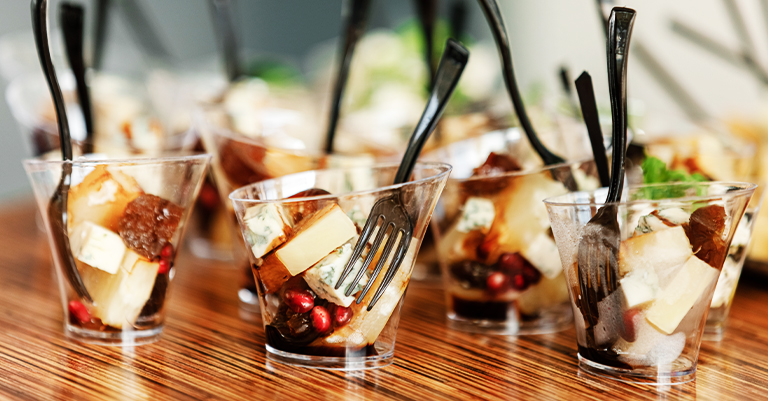Unleash Your Trade Show Staff Potential with a Standout Strategy
Trade shows are busy places where thousands of businesses compete for attention. Companies showcase products and services to potential clients. In this crowded space, the success of a booth usually comes down to one thing: the team running it. Your trade show staff are the face, voice, and heart of your brand. They engage with visitors, answer questions, and create strong first impressions that can lead to lasting business connections.
So, how can you make sure your team stands out? This guide will show you how to build, train, and prepare a fantastic trade show team that will make your booth shine. From key qualities to training tips, you’ll learn everything you need to know to turn your booth into a star attraction.
Define Your Objectives and Choose the Right Team

The first step to building an effective trade show team is knowing your objectives. Are you launching a new product? Building brand awareness? Generating leads? Each objective may require a slightly different approach and skill set. Here’s how to align your team with your goals:
- Product Knowledge: If you’re launching a new product, choose staff with in-depth knowledge of your product line and features.
- Lead Generation: For lead-driven events, prioritize team members who are skilled at identifying qualified leads and know how to move them through the sales funnel.
- Customer Engagement: When building brand awareness, consider team members with high-energy personalities who naturally attract and engage crowds.
Once objectives are clear, pick team members who are knowledgeable and passionate about your brand. Prioritize people who have strong interpersonal skills, are proactive, and can remain upbeat and professional.
Create a Comprehensive Trade Show Staff Training Program
An effective training program is essential to prepare your team for the high-energy environment of a trade show. Experienced staff will benefit from a refresher on your products, messaging, and sales techniques. Here’s what a comprehensive training program should include:
- Product Knowledge: Ensure every team member can confidently and accurately describe your products or services. This includes understanding the key features, benefits, and differentiators that set your brand apart from competitors.
- Sales Training: Equip your team with specific strategies for identifying leads, making quick connections, and moving prospects to the next step in the sales cycle. Consider role-playing exercises that simulate common trade show scenarios.
- Brand Messaging: Make sure your staff is aligned on core brand messages and the tone you want to convey. Consistency is key to making a memorable impression.
- Engagement Techniques: Attendees don’t want to feel “sold to” immediately. Train your team on open-ended questions and ways to initiate conversations that feel natural and inviting, instead of rehearsed or aggressive.
- Handling Objections: Equip your team to manage common objections gracefully. Objections may range from cost to timing, and staff should feel comfortable and confident in addressing these barriers without feeling defensive.
Prepare Your Trade Show Staff with Clear Roles and Responsibilities

At a trade show, each team member should have a clear, defined role that leverages their strengths. Having designated roles not only increases efficiency but also ensures a balanced team dynamic. Here are a few key roles to consider:
- Greeters: These team members are the front line, welcoming attendees with a warm smile and directing them to different areas of the booth or to other team members.
- Product Demonstrators: Skilled at walking through your product or service’s functionality, these staffers should be able to answer detailed questions and show attendees exactly how your product can solve their problems.
- Sales Closers: For those further along in the buyer’s journey, these individuals have a knack for closing deals and converting leads.
- Support Staff: These “behind the scenes” heroes keep everything running smoothly by managing inventory, setting up demonstrations, and ensuring collateral is stocked.
Each team member should know their responsibilities, as well as understand their teammates’ roles. This clarity fosters teamwork and allows your booth to operate like a well-oiled machine.
Engagement Strategies to Attract and Hold Attention
Once your team is in place, the next step is ensuring they know how to attract and engage attendees effectively. Here are a few techniques that work well:
- Use Dynamic, Open-Ended Questions: Instead of the generic “How can I help you today?” try questions like “What brings you to the event?” or “Are you looking for a specific solution today?” This invites conversation and encourages attendees to share their needs and goals.
- Body Language and Approachability: Non-verbal cues are powerful. Encourage your team to smile, make eye contact, and avoid crossing their arms, which can seem uninviting. Staying relaxed and engaged helps create an approachable environment.
- Personalized Interaction: Train your staff to personalize each interaction by listening to what the attendee says and responding accordingly. Personal touches make attendees feel valued and increase the likelihood of a meaningful exchange.
- Offer Valuable Information and Solutions: Instead of diving straight into a pitch, aim to provide value right away. For instance, sharing a quick tip related to your industry or a relevant trend can position your staff as helpful and knowledgeable resources.
Leverage Technology to Enhance the Experience

Incorporating technology into your booth setup not only makes your booth look modern but can also streamline your team’s interactions with attendees. Here’s how technology can help your staff maximize booth engagement:
- Interactive Displays and Demos: Use tablets, screens, or VR headsets to create interactive demos of your product or service. This keeps attendees engaged and gives your staff an opportunity to provide guided demonstrations.
- Lead Capture Tools: Digital lead capture forms allow staff to quickly gather contact information, tag specific interests, and keep the process streamlined. Digital forms reduce paperwork and make it easy to follow up after the show.
- Gamification: Adding gamified elements like spin-the-wheel, trivia, or mini-challenges can attract a crowd to your booth and create a fun, memorable experience.
- Social Media Integration: Encourage your team to promote social media engagement. Offering incentives for attendees who share your booth on social media (like a prize entry) can help amplify your reach and keep the interaction going after the event.
Follow Up on Leads Promptly and Effectively
The trade show may be over, but the work isn’t done. Following up on leads is essential to converting booth conversations into sales. Establish a lead management system to ensure your team can keep the momentum going. Here’s how to set up an effective follow-up plan:
- Segment and Prioritize Leads: Not every lead is equally valuable. Segment attendees into categories based on interest level or the type of conversation that took place. This lets you prioritize high-quality leads for immediate follow-up.
- Personalized Outreach: Instead of a generic follow-up email, use the notes your team took during the show to create personalized messages. Mentioning specific points discussed at the booth demonstrates attentiveness and builds rapport.
- Timely Follow-Up: Research shows that the chances of converting a lead decrease significantly the longer you wait to reach out. Aim to follow up within a week, if not sooner.
- Offer Additional Value: When following up, consider offering additional resources like an exclusive demo, a discount, or a free consultation. This helps keep leads engaged and provides a compelling reason for them to take the next step.
Debrief and Collect Feedback from Your Trade Show Staff
After the trade show, hold a debrief session with your team to capture insights, lessons learned, and areas for improvement. This valuable feedback can enhance future trade shows and maximize your return on investment. Here’s how to make the most of your debrief:
- Celebrate Wins: Start by acknowledging and celebrating your team’s successes. This could be recognizing the most engaged team member, the highest lead generator, or someone who solved a challenging situation gracefully.
- Identify Pain Points: Encourage team members to share any difficulties they encounter, whether it is with the setup, attendee questions, or team dynamics. Pain points provide insights into areas that need adjustment.
- Evaluate Engagement Techniques: Review what engagement techniques worked best and what could be improved. For instance, was there a particular question or demo format that consistently attracted attention?
- Gather Suggestions for Future Events: Your team has firsthand experience of what worked and what didn’t. Encourage them to share ideas on how to make the booth even more effective for the next event.
Motivating and Rewarding Your Trade Show Staff for Outstanding Performance

Trade shows can be exhausting, and the enthusiasm of your team plays a significant role in the energy they bring to the booth. Motivating your staff with rewards and recognition for their hard work can boost morale and increase engagement. Here are some ways to show appreciation:
- Recognition and Praise: Give public recognition for specific achievements, such as the number of leads captured or outstanding customer engagement.
- Incentive Programs: Consider implementing a reward program for top performers, such as gift cards, an extra day off, or even cash bonuses.
- Team Bonding Activities: Encourage team bonding with an after-show dinner or team-building activity. This strengthens team connections and serves as a nice way to unwind after the show.
Closing Thoughts on Developing Your Trade Show Staff
In a sea of trade show booths, a team that knows how to connect, engage, and inform attendees is a true differentiator. By carefully selecting, training, and motivating your trade show staff, you can elevate your booth’s presence and ensure a successful event. From setting clear objectives to equipping your staff with effective tools and follow-up strategies, every step you take contributes to maximizing your trade show investment.
By focusing on the human element and building a team that embodies your brand’s values and expertise, your booth will not only attract attention but also create meaningful, lasting impressions that boost your bottom line. So, as you prepare for your next trade show, remember that your team is the most valuable asset. With the right approach, your trade show staff can make your booth a high-energy destination that attendees remember long after the event is over.




